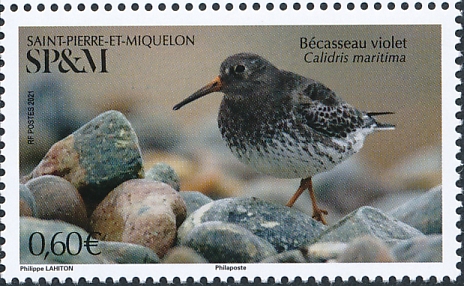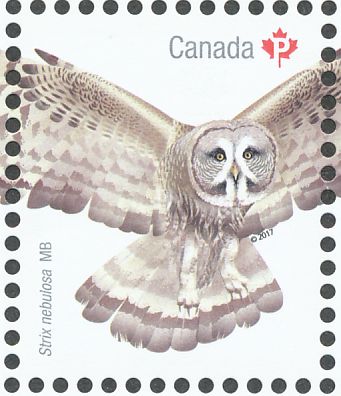Purple sandpiper (Calidris maritima)
The 2021 addition to the long-running birds series from St Pierre et Miquelon is the Purple Sandpiper.

One initial curiosity about this stamp, on which the French Monthly “L’Écho de la Timbrologie” sought clarification – from the image that was sent to them for the magazine – is that the original 2021 stamp included a small spelling error in the Latin name of the bird, with the text on the stamp reading: “Calidris martima”. It would appear that at first, no-one spotted the missing “i”: a minor hiccup in the proofing process that for us collectors might have made the stamp a bit more alluring. However, from the image provided on La Poste’s website (see below), it would appear that La Poste ordered a reprint of the stamp with the correction to the spelling error.
Philippe Lahiton created (photographed) the Purple sandpiper stamp and as far as I am aware (though I am missing one or two from this series) he has not previously been involved in this series.
The information from St Pierre et Miquelon suggests that this particular stamp and the previous one from 2020 are part of a mini-series featuring waders.
La Poste has printed 30,000 of these stamps for St Pierre et Miquelon. They are available in sheets of 25. eBird Canada says about this bird:
“Hardy denizen of rocky coastlines regularly pounded by heavy surf. In winter, often in flocks foraging among large rocks. Generally dark grayish; purple sheen only visible at close distance in good light. Bill droops slightly and has an orange base. In winter, legs are yellowish-orange and belly is white with gray spots. Rarely seen on remote Arctic breeding grounds. Breeding plumage more brownish with contrasting dark speckling on back and breast.”




